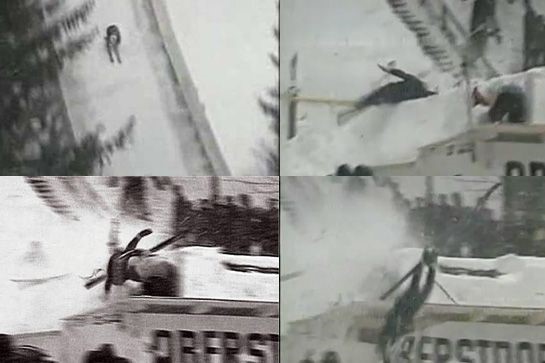The XXIII Winter Games recently concluded in PyeongChang South Korea. In my opinion, the event that reveals true courage or perhaps true idiocy is ski jumping. Streaking down a ramp at speeds up 60 miles per hour then launching skyward and flying the length of almost three football field seems a perfect recipe for disaster…Which is a perfect segue for this installment of History is Better than Fiction.
Unless you are old enough (and possibly bored enough) to have been watching ABC’s Wide World of Sports (WWS) on Saturday afternoons during the 1970s, you are probably clueless as to the origins of the phrase, “The Agony of Defeat.”
In the prehistoric period before multiple cable stations, and most certainly before there were channels devoted solely to sports, WWS enthralled viewers with events other than the big four - football, baseball, hockey and basketball. One week it was cliff diving from Acapulco and the next it was lumberjack championships. Of course, the Holy Grail of WWS offerings was Evil Knievel attempting, and succeeding most times, to jump his Harley Davidson over a string of buses, trucks or fountains.
Legendary sports caster Jim McKay narrated the opening sequence of WWS, “Spanning the globe to bring you the constant variety of sports, the thrill of victory and the agony of defeat, the human drama of athletic competition. This is ABC’s Wide World of Sports.”
Beginning in early 1970s, the opening scene that accompanied the phrase “agony of defeat” was a ski jumper who just before takeoff loses his balance, flies off the side of the ramp and tumbles violently to the ground. It was a horrible crash but you just had to watch…every week. Who was that ski jumper? Did he survive?
The jumper was twenty-two-year-old Vinko Bogataj, a Slovenian competing for then Yugoslavia. The event was the 1970 World Ski Championships held in Oberstdorf, West Germany, and yes, he survived. The carnage that was enjoyed by weekly viewers resulted in Bogataj breaking an ankle and suffering a concussion. Shortly thereafter, ABC began using the clip for WWS, and Bogataj became famous, albeit anonymously.
In a recent interview with ESPN.com’s Thomas Neumann, Bogataj discussed the ill-fated day. "It was bad weather, and we had to wait around 20 minutes before we got permission to start. I remember that I couldn't see very good. The track was very bad, and just before I could jump, the snow or something grabbed my skis and I fell. From that moment, I don’t remember anything." The fall occurred in March 1970, and Bogataj returned to training that June. "He's a fearless guy," his daughter Sandra added.
In the ensuing years, unbeknownst to him, the fall became an iconic image in America. "He didn't have a clue he was famous," his daughter said. That changed when ABC tracked him down in 1981 and asked him to attend a ceremony in New York to celebrate the 20th anniversary of Wide World of Sports. At the gala Bogataj received the loudest ovation among a group that included some of the best-known athletes in the world. The moment became truly surreal for Bogataj when Muhammad Ali asked for his autograph.
"He didn't take Ali seriously that he wanted an autograph, because Muhammad Ali is a really famous guy," his daughter said. "That was a special moment. Then he realized that he too must be famous."
Now 70, Bogataj lives in Lesce, Slovenia with wife Liliana. He's an award-winning artist, whose paintings have been exhibited in Europe and the United States.
To see Bogataj’s fall https://www.youtube.com/watch?v=TtdBiGDmSeE


